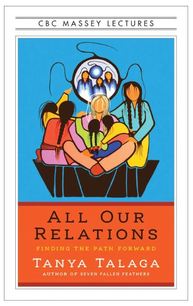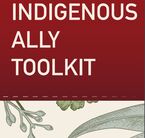EDUCATIONAL OPPORTUNITIES
|
The Ojibwe People's Dictionary
"The Ojibwe People’s Dictionary was established by faculty and students in the Department of American Indian Studies at the University of Minnesota. For many years,..." |
The term “First Nations” refers to one of three distinct groups recognized as “Aboriginal” in the Constitution Act of 1982. The other two distinct groups characterized as “Aboriginal” are the Métis and the Inuit.
There are 634 First Nation communities (also known as reserves) in Canada, with First Nation governments. First Nations are part of unique larger linguistic and cultural groups that vary across the country. In fact, there are over 50 distinct nations and language groups across the country.
First Nations have a unique and special relationship with the Crown and the people of Canada as set out in the Royal Proclamation of 1763 and manifested in Treaties, the Constitution Acts of 1867 and 1982, Canadian common law and International law and as outlined in the United Nations Declaration on the Rights of Indigenous Peoples.
This special relationship between First Nations and the Crown is grounded in First Nation inherent and Aboriginal rights and title, Treaties and negotiated agreements with a view toward peaceful coexistence, mutual respect, recognition and the equitable sharing of lands and resources. Many Treaties, reflected in written documents, wampum and oral understanding, were entered into between First Nations and the British Crown (the Government of Canada after Confederation) between 1701 and 1923. Treaty promises and agreements included non-interference, protection of hunting and fishing rights, sharing of lands and resources, health and education benefits, economic tools and benefits for the duration of the Treaty relationship.
There are 634 First Nation communities (also known as reserves) in Canada, with First Nation governments. First Nations are part of unique larger linguistic and cultural groups that vary across the country. In fact, there are over 50 distinct nations and language groups across the country.
First Nations have a unique and special relationship with the Crown and the people of Canada as set out in the Royal Proclamation of 1763 and manifested in Treaties, the Constitution Acts of 1867 and 1982, Canadian common law and International law and as outlined in the United Nations Declaration on the Rights of Indigenous Peoples.
This special relationship between First Nations and the Crown is grounded in First Nation inherent and Aboriginal rights and title, Treaties and negotiated agreements with a view toward peaceful coexistence, mutual respect, recognition and the equitable sharing of lands and resources. Many Treaties, reflected in written documents, wampum and oral understanding, were entered into between First Nations and the British Crown (the Government of Canada after Confederation) between 1701 and 1923. Treaty promises and agreements included non-interference, protection of hunting and fishing rights, sharing of lands and resources, health and education benefits, economic tools and benefits for the duration of the Treaty relationship.
~~~~~~~~~~~~~~~~~~~~~~~~~~~~~~~~~~~~~~~~~~~~~~~~~~~~~~~~~~~~~~~~~~~~~~~~~~~~~~~~~~~~~~~~~~~~~~~~
~~~~~~~~~~~~~~~~~~~~~~~~~~~~~~~~~~~~~~~~~~~~~~~~~~~~~~~~~~~~~~~~~~~~~~~~~~~~~~~~~~~~~~~~~~~~~~~~
~~~~~~~~~~~~~~~~~~~~~~~~~~~~~~~~~~~~~~~~~~~~~~~~~~~~~~~~~~~~~~~~~~~~~~~~~~~~~~~~~~~~~~~~~~~~~~~~
OJIBWE - this article by Charles A. Bishop, found in The Canadian Encyclopedia gives summary regarding multiple topics: Ojibwe Groups, Language, Traditional Life, Spiritual Life, Post-Contact, Contemporary Life, Art, Activism, and Population. This article was last updated October 25, 2021.
~~~~~~~~~~~~~~~~~~~~~~~~~~~~~~~~~~~~~~~~~~~~~~~~~~~~~~~~~~~~~~~~~~~~~~~~~~~~~~~~~~~~~~~~~~~~~~~~
~~~~~~~~~~~~~~~~~~~~~~~~~~~~~~~~~~~~~~~~~~~~~~~~~~~~~~~~~~~~~~~~~~~~~~~~~~~~~~~~~~~~~~~~~~~~~~~~
~~~~~~~~~~~~~~~~~~~~~~~~~~~~~~~~~~~~~~~~~~~~~~~~~~~~~~~~~~~~~~~~~~~~~~~~~~~~~~~~~~~~~~~~~~~~~~~~
|
This link takes you to the description of the video series
20 hour FREE* on-line course Topics for the 12 lessons include the fur trade and other exchange relationships, land claims and environmental impacts, legal systems and rights, political conflicts and alliances, Indigenous political activism, and contemporary Indigenous life, art and its expressions. *Free at the time of website publishing. |
~~~~~~~~~~~~~~~~~~~~~~~~~~~~~~~~~~~~~~~~~~~~~~~~~~~~~~~~~~~~~~~~~~~~~~~~~~~~~~~~~~~~~~~~~~~~~~~~
Click ....to be sent to the villagersmedia.com/KateriTV webpage
to view 12 educational videos with Study Guides
to view 12 educational videos with Study Guides
~~~~~~~~~~~~~~~~~~~~~~~~~~~~~~~~~~~~~~~~~~~~~~~~~~~~~~~~~~~~~~~~~~~~~~~~~~~~~~~~~~~~~~~~~~~~~~~~

CBC MASSEY LECTURES
The 2018 CBC Massey Lectures:
All Our Relations: Finding the Path Forward
CBC Radio · November 2018
In her 2018 CBC Massey Lectures series, titled All Our Relations: Finding the Path Forward, prize-winning journalist Tanya Talaga (author of Seven Fallen Feathers) explores the legacy of cultural genocide against Indigenous peoples.
For Talaga, that cultural genocide has led to a forced disconnection from land and language by Indigenous peoples. The need now, she says, is for Indigenous self-determination in social, cultural and political arenas.
Many communities, in Canada and abroad, are finding that the road back to a relationship with land and language are keys to community healing — to what, in fact, it means to be Indigenous.
These are lectures about values for our times, and for all of us.
The book version of the lectures is published by House of Anansi Press.
The 2018 CBC Massey Lectures:
All Our Relations: Finding the Path Forward
CBC Radio · November 2018
In her 2018 CBC Massey Lectures series, titled All Our Relations: Finding the Path Forward, prize-winning journalist Tanya Talaga (author of Seven Fallen Feathers) explores the legacy of cultural genocide against Indigenous peoples.
For Talaga, that cultural genocide has led to a forced disconnection from land and language by Indigenous peoples. The need now, she says, is for Indigenous self-determination in social, cultural and political arenas.
Many communities, in Canada and abroad, are finding that the road back to a relationship with land and language are keys to community healing — to what, in fact, it means to be Indigenous.
These are lectures about values for our times, and for all of us.
The book version of the lectures is published by House of Anansi Press.
~~~~~~~~~~~~~~~~~~~~~~~~~~~~~~~~~~~~~~~~~~~~~~~~~~~~~~~~~~~~~~~~~~~~~~~~~~~~~~~~~~~~~~~~~~~~~~~~




